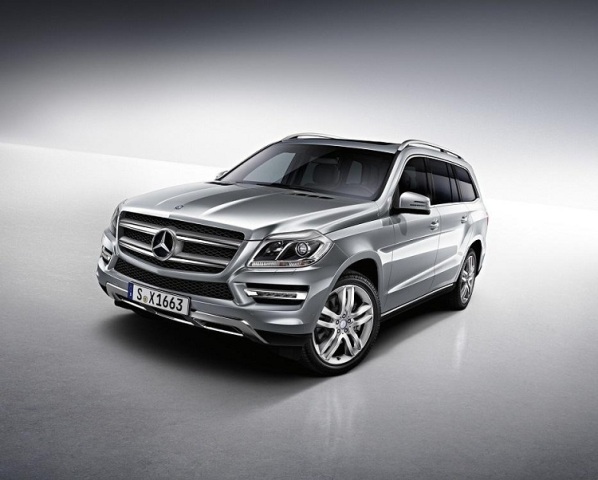Mercedes was among the first few companies to manufacture powerful, four-wheel engines. Read on to know interesting & amazing information on history, origin & background of Mercedes Benz.
History Of Mercedes
The name Mercedes is synonymous with wealth, quality, comfort and reliability. It is a dream automobile for many people across the globe. Now known as Mercedes-Benz, the company is known among the top car manufacturers of the world. It has its own unique style and personal touch, when it comes to luxury cars and no other company can compare to all that Mercedes has accomplished till date. The car dates back to over hundred years and has a very fascinating history. Gottlieb Daimler and Carl Benz are responsible for the early developments and the formation of the Mercedes Benz Company. This article dwells at length on the origin and background of Mercedes. Read on to know its fascinating and awe-inspiring history.

Interesting & Amazing Information On Origin & Background Of Mercedes
Two men, Gottlieb Daimler and Carl Benz, are credited with the invention of one of the finest car brands of all times. Daimler was born on March 17, 1834 and Carl Benz on November 25, 1844. Both these men grew up with something in common; machines fascinated them from an early age and they were determined to make their mark in the automobile industry. Gottlieb Daimler was the first one to meet with success in this field, when he installed a combustion engine into a road vehicle. Daimler was the first recognized internal combustion vehicle and the first to incorporate a practical transmission system.
In 1890, a corporation “Daimler Motoren Gesellschaft” was formed to meet the increasing demand for Daimler’s engine. On the other hand, Benz formed another corporation, Benz & company, at Mannheim, with several associates. There was a motor race conducted by the Petit-Journal of Paris in 1894, which attracted 46 entries. This race was looked forward to by everyone, as it was a test of the steamer and electric versus the gas burners. The first three winning cars in this race were powered by Daimler built engines.
Emil Jelinek, a wealthy banker-sportsman was quiet impressed with the performance of Daimler’s motor in the race. He purchased controlling stock interest in Daimler in the early 1890’s. He also supported and encouraged Daimler in his idea to create the most powerful car of those days, a 35 hp monster. In 1900, the 4-cylinder Daimler was completed and the car was baptized in honor of Emil Jelinek’s beautiful daughter, Mercedes. This new car created a sensation in the motor field. Right from its flaring front fenders, rakish rearward sloping steering column to the T-head type cylinder and twin carburetors, Mercedes was a real beauty and did justice to its brand name.Daimler died in 1990. In 1903, Benz took out a competitor to Mercedes, by the name ‘Parsifil’.
Jelinek, the controller of the Daimler plant, was obsessed with high-speed automobiles. His interest made him control exclusive rights to the bulk of the Mercedes production and carefully limit the sale of the cars to individuals of known influence. This step placed the car with an upper-bracket clientele, which gave Mercedes its reputation as a quality and high performance product. With the commencement of the World War I, the production of the vehicle suffered a great blow, with the factories getting destroyed. However, it took only three years for the owners, O.Hoppe, W.haspel and other coordinators to rebuild the factory and regain the reputation Mercedes rightly deserved. This was also the time when Dalmier and Benz signed an ‘Agreement of Mutual Interest’, whereby both the companies merged.
In the year 1930, Mercedes-Benz launched the biggest and the most prestigious of their cars. The 770 Grosser, made for the wealthy people of the world, was powered by an 8 cylinder, 7.6 liter engine. In the 1930’s, Mercedes also manufactured great racing cars, such as the W25 racer. The Mercedes-Benz 170V was yet another classic addition to the Mercedes-Benz portfolio. In the recent years, Mercedes has launched many SUV’s sedan and roadsters to woo the customer, with phenomenal success and redefined the meaning of ‘luxury’ for car owners. At present, the range of Mercedes cars range from passenger and light commercial to heavy commercial equipment.
See also
- Nissan Motors | Porsche | Rolls-Royce | Scooters | Skoda Auto | Sports Cars | Suzuki Motorcycles | TVS | Tata Motors | Toyota Motors
More from iloveindia.com
- Home Remedies | Ayurveda | Vastu | Yoga | Feng Shui | Tattoos | Fitness | Garden | Nutrition | Parenting | Bikes | Cars | Baby Care | Indian Weddings | Festivals | Party ideas | Horoscope 2015 | Pets | Finance | Figures of Speech | Hotels in India : Delhi | Hyderabad | Chennai | Mumbai | Kolkata | Bangalore | Ahmedabad | Jaipur
- Contact Us Careers Disclaimer Privacy Policy Advertise With Us Lifestyle Sitemap Copyright iloveindia.com. All Rights Reserved.






